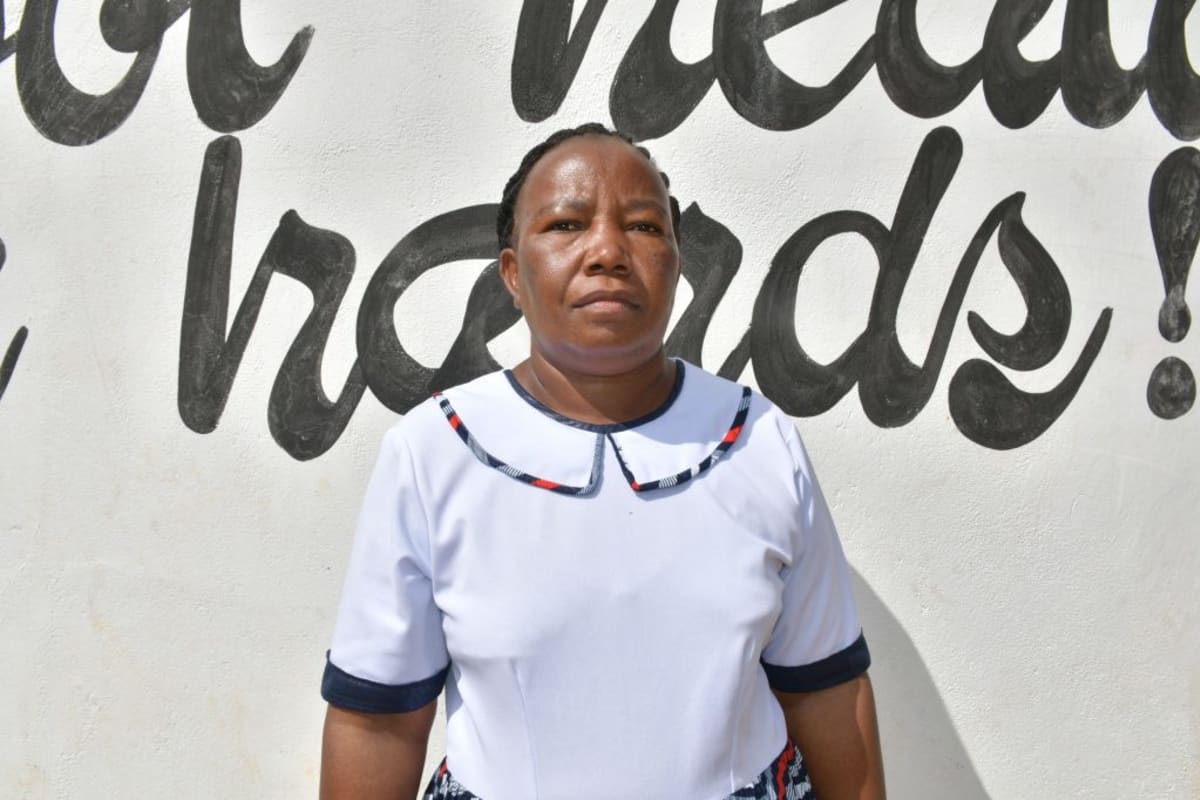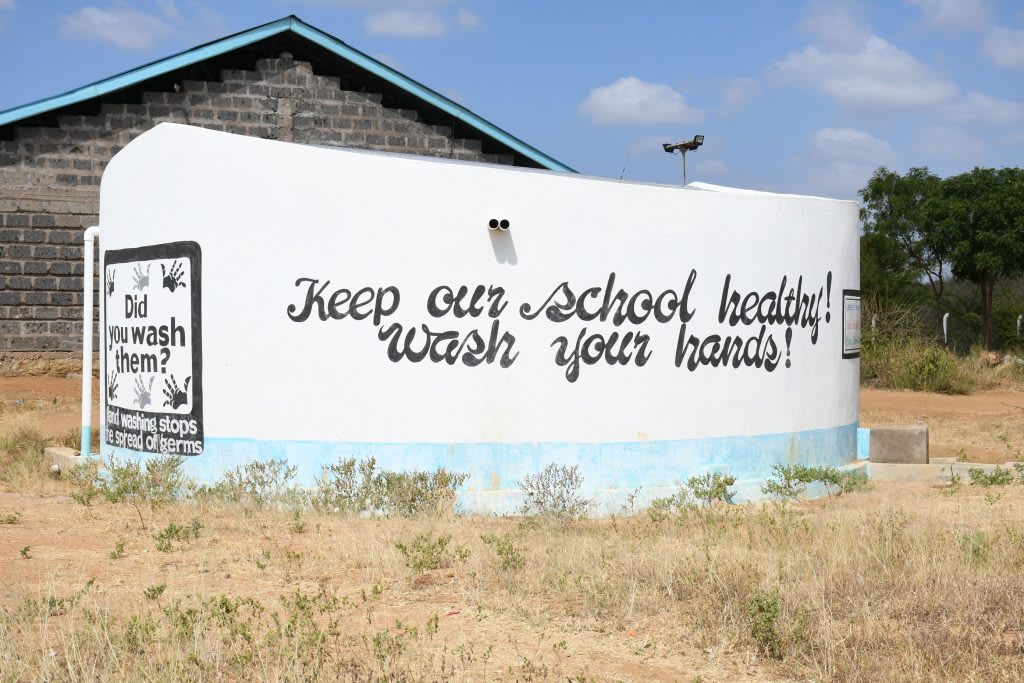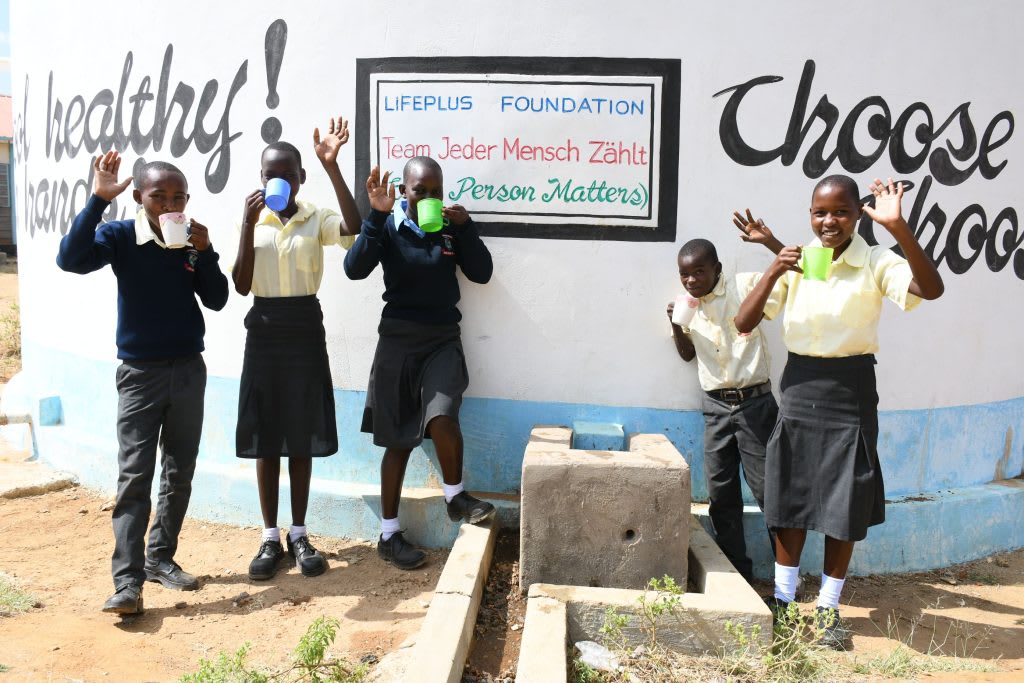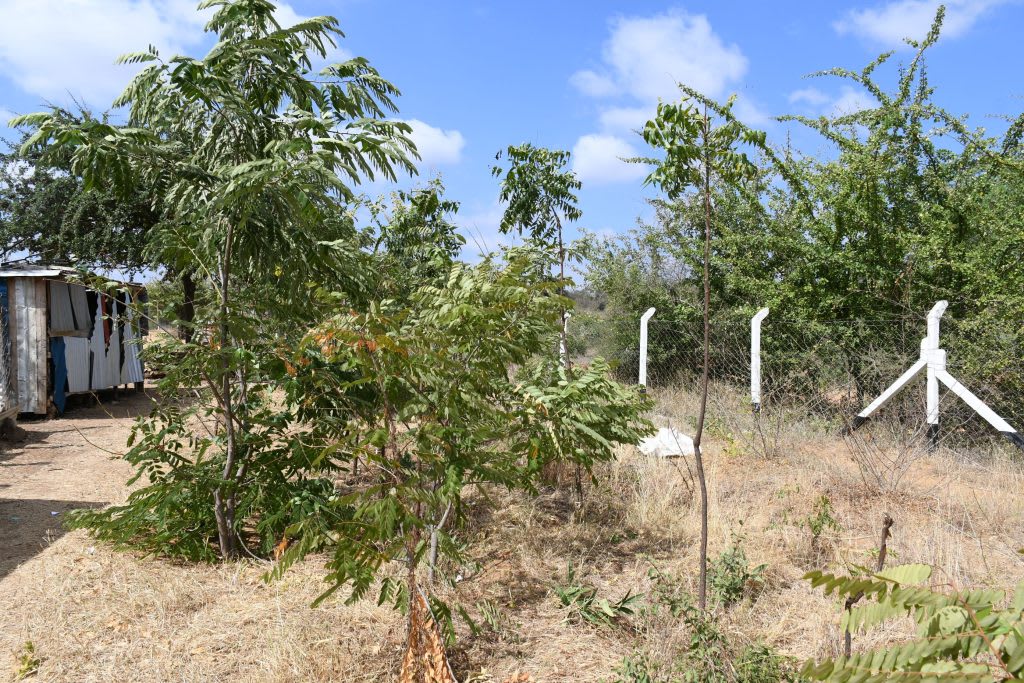The 461 students and staff of Mutwangombe Secondary School, a day school in rural Kitui County, face a water crisis each day.
The school has several small water tanks with a total capacity of 50,000 liters. Still, because of the hot and dry climate and the large student population, they are not large enough to sustain the whole school during the several months of drought.

"There are times when no water is in school, especially during the peak drought periods. This forces me to stay thirsty and hungry throughout the day. It is difficult to focus on what the teacher is saying when your throat is burning from thirst. I also have to bear with the foul smell from the latrines because they are rarely cleaned, thanks to the scanty availability of water. I have to remove my sweater and blouse before using the latrine to prevent the odor from sticking on my garments," said 16-year-old Margaret K. (seen below).

When the tanks are dry, the school has to purchase water from a water delivery truck, but finding sufficient funds for the expense is difficult. The deliveries are often delayed, especially during drought periods, causing meals to be delayed, and students go to class thirsty and hungry, affecting their concentration. Sadly, the water delivered is also often contaminated, exposing students to water-related infections such as amoeba, typhoid, and dysentery.
"The students are often sent home or to [the] hospital due to water-related infections like typhoid, amoeba, and dysentery. The school has experienced dismal academic performance because of student absenteeism, thanks to the water-related infections," said 56-year-old headteacher Mwikali James, shown below.

"Running school operations like building more classrooms is difficult because water is scarce. I have also purchased water during peak drought periods using the strained resources because the students have to drink and eat during their stay in school," continued Mwikali.
Installing a 104,000-litre rainwater harvesting tank will ensure students have a clean water source within the school so they are no longer thirsty or exposed to water-related infections. The school will save on water expenses, purchase more learning materials, and build more infrastructure to improve the student's education, giving them more opportunities for the future.
"The set up of a water project in our school will reduce the financial strain, and I will not have to send students home for fees. They will take their meals on time and be free from distractions," concluded Mwikali.
Water at schools is unique, which is why we need unique solutions.
The Proposed Solution, Determined Together...
At The Water Project, everyone has a part in conversations and solutions. We operate in transparency, believing it benefits everyone. We expect reliability from one another as well as our water solutions. Everyone involved makes this possible through hard work and dedication.
In a joint discovery process, community members determine their most advantageous water solution alongside our technical experts. Read more specifics about this solution on the What We're Building tab of this project page. Then, community members lend their support by collecting needed construction materials (sometimes for months ahead of time!), providing labor alongside our artisans, sheltering and feeding the builders, and supplying additional resources.
Water Access for Everyone
This water project is one piece in a large puzzle. In Kenya, Sierra Leone, and Uganda, we're working toward complete coverage of reliable, maintained water sources that guarantee public access now and in the future within a 30-minute round trip for each community, household, school, and health center. One day, we hope to report that this has been achieved!
Training on Health, Hygiene & More
With the community's input, we've identified topics where training will increase positive health outcomes at personal, household, and community levels. We'll coordinate with them to find the best training date. Some examples of what we train communities on are:
- Improved hygiene, health, and sanitation habits
- Safe water handling, storage & treatment
- Disease prevention and proper handwashing
- Income-generation
- Community leadership, governance, & election of a water committee
- Operation and maintenance of the water point
Handwashing Stations
Alongside each water source in Southeast Kenya schools, we also provide three new handwashing stations fitted with three taps each, allowing nine students to wash their hands at once. These will allow everyone at the school to wash their hands without running water. Handwashing is so important to help prevent future water-related illnesses in the school community.
The student health club will maintain the stations, fill them with water, and supply them with soap (which we will teach the school community how to make during the training!).







 Rainwater Catchment
Rainwater Catchment
 Rehabilitation Project
Rehabilitation Project





























